#shenyi
Text




chinese hanfu by 繁韶
404 notes
·
View notes
Text

楚国纯狐 ×3
59 notes
·
View notes
Text
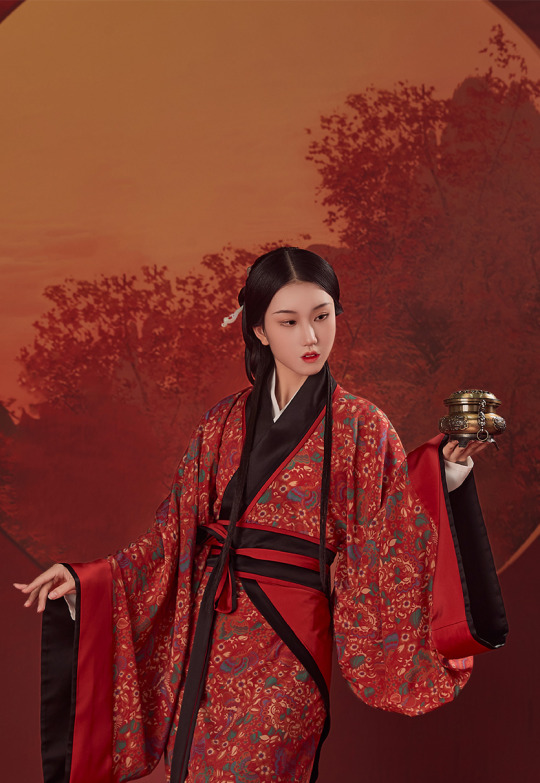
#汉服婚服#汉服运动#汉服#漢服運動#漢服#hanfu movement#hanfu#深衣#shenyi#曲裾#quju#china#chinese#chinese folk#chinese fashion#chinese culture#chinese costume#chinese outfit#chinese attire#woman fashion#east asia#asia#asian#asian folk costume#asian folk#asian fashion#asian costume#asian culture#asian outfit#asian attire
228 notes
·
View notes
Text

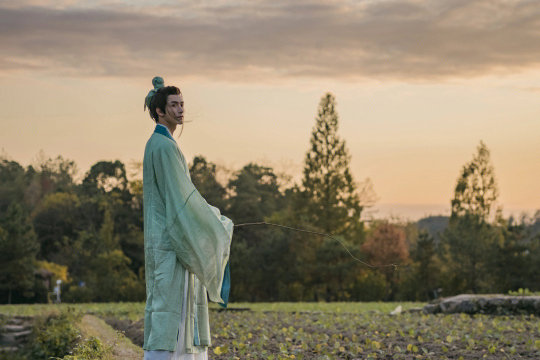


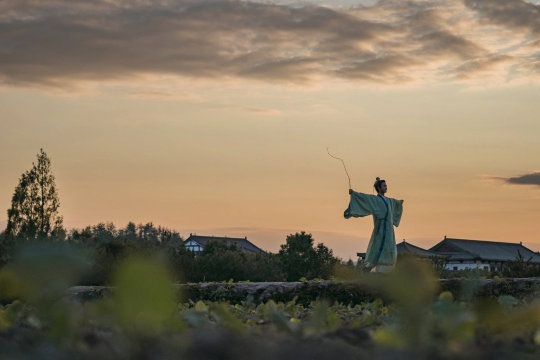
Traditional Male Hanfu Look
from hanfu model Gong Han
91 notes
·
View notes
Text

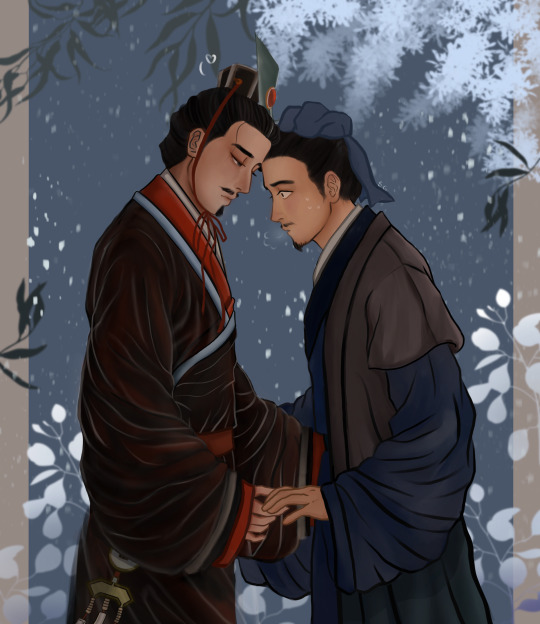

Drunk Confession🥺
78 notes
·
View notes
Text
DAMN
youtube
Forever mad at yall for not telling me about Under The Skin
And this edit Christ my lord
#under the skin drama#under the skin#ducheng#shenyi#shen yi#du cheng#du cheng x shen yi#shencheng#chengshen#idk i like the sound of it#ig we need a vote#but mostly we need more ppl to know about them#cdrama#chinese bl#so if chinese#yk what that means#its a secret bl#ill make a post ab in depth study of why its GAY#gay gay ouh gay#yeah#masterpiece#Youtube
11 notes
·
View notes
Text
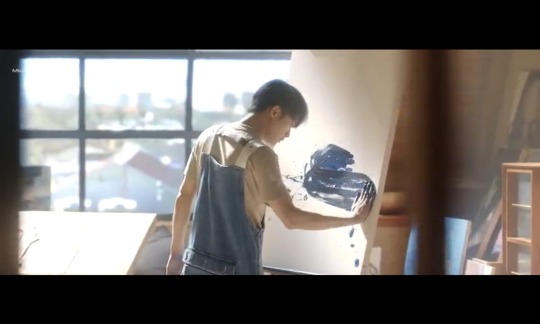
What I find interesting, is that in almost all the stories in the Under the skin there are heroes - artists.
False artists - parasites, who steal other people's faces.
True artists - usually crushed or pressed by the system they live in.
And even the little girl in the drama is an artist. And precisely because Shen Yi is an artist too, he is the first to hear her mute cry.



And after all, at first glance, her family is quite ordinary - but in reality everything in this family is a lie .
And the girl looks fine. Smiling, enjoying the little things. But inside her - a storm and suffocation.

Doesn't it remind us of another smiling artist who looks like he's okay?
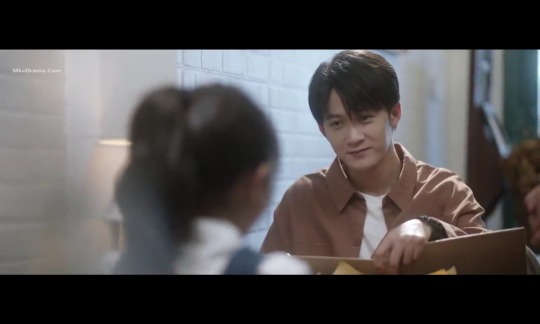
And so I think about whether the artist reflects in each character some repressed parts of the soul of Shen Yi himself. The fragments that he has yet to collect
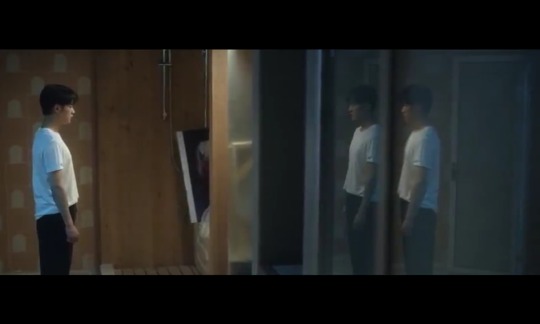
5 notes
·
View notes
Text
oh no what if þe reason i find yukata and hanfu so appealing is þat you can wear tons of loose fabric but not in a girl way
orz
4 notes
·
View notes
Photo

Qiongqi Beast, one among the four legendary primordial beasts of China - Namesake of Qiongqi Path (MDZS) - The foreshadow of Wei Ying’s death. - Illustration by Shan Zhe, published in Guan Shan Hai, the compiled and edited version of the OG Shanhai Jing, by Hunan Literature and Art Publishing House.
Recently I got my hand on Shanhai Jing (Classic of Mountains and Seas), the 2200+ years old classical text on Chinese fantastical flora, fauna, beasts, strange people, and gods. Qiongqi is counted among Shanhai Jing menagerie. Below is my translation of the description of Qiongi Beast directly from Hunan’s Shanhai Jing.
窮奇 (Qiongqi)
- Text directly from the 2200+ year old Shanhai Jing: Qiongqi has the shape of a tiger with wings. It eats human, starting from the head. Those who it eats all have their hair unbound. It lives North of the Peach Dog’s den.
- Modern Anthropologist Notes (by Hunan Publishing House’s editing team):
1/ Qiongqi beast has the shape of a winged tiger. It is a vicious man eater. When it eats, it starts from the head. Those who are eaten by it all have their hair unbound.
2/ Qiongqi also appears on Xishan Jing (Classic of Western Mountains), where it is described as ox-like, with porcupine quills, and barks like a dog. This description is vastly different from the one in Shanhai Jing.
3/ Qiongqi is mentioned in many ancient texts. In the Records of the Five Emperors, Qiongqi is said to be the hideous, good-for-nothing son of Shaohao (son of the Yellow Emperor, one of the three legendary ancient emperors of China) (*). It is said to destroy those who are loyal and faithful and fawn over those who are deceitful and perverse.
(*: In other words, Records of the Five Emperor claims that Qiongqi was a human prince who fell to beasthood out of wickedness)
4/ Both the Records of the Five Emperor and Shenyi Jing (Classic of Strange Gods) agree that Qionqi is an evil beast that has completely reversed concept of good and evil. Shenyi Jing notes that Qionqi eats those who are good, honest, and loyal and will aid wicked liars.
- End Translation -
.....................................................
Symbol of Qiongqi in MDZS:
If you have read MDZS, then there’s probably no need to repeat the name Qiongqi Path. The symbolism is readily apparent.
Qiongqi Path is the site where Wei Ying was repeatedly forced onto a death path by Jin schemes. The first time was when he rescued the Wen remnants (who were forced to move from a neutral territory Ganquan 甘泉 to Qiongqi Path, controlled by Jin after the Sunshot campaign, as per the novel). And the second time was during Jin Zixun’s failed ambush.
In other words, Wei Ying’s death was foreshadowed in the name of the location itself. Qiongqi beast destroys and eats the good, honest, loyal person with hair unbound. It eats from the head down, symbolizing the loss of agency and ability to call for help or argue the person’s own case. Wei Ying was symbolically eaten by Qiongqi.
If you want to look further, there is also correlation between Qiongqi’s origin as a human prince associated with the color yellow who fell to beasthood out of wickedness and the Jin’s origin as a cultivator House founded by royalty and whose primary color is yellow.
185 notes
·
View notes
Text

Coworkers Shenyi where Shen Shen after years of crushing decides to make the first move and Ye Baiyi learns this man exists
113 notes
·
View notes
Text
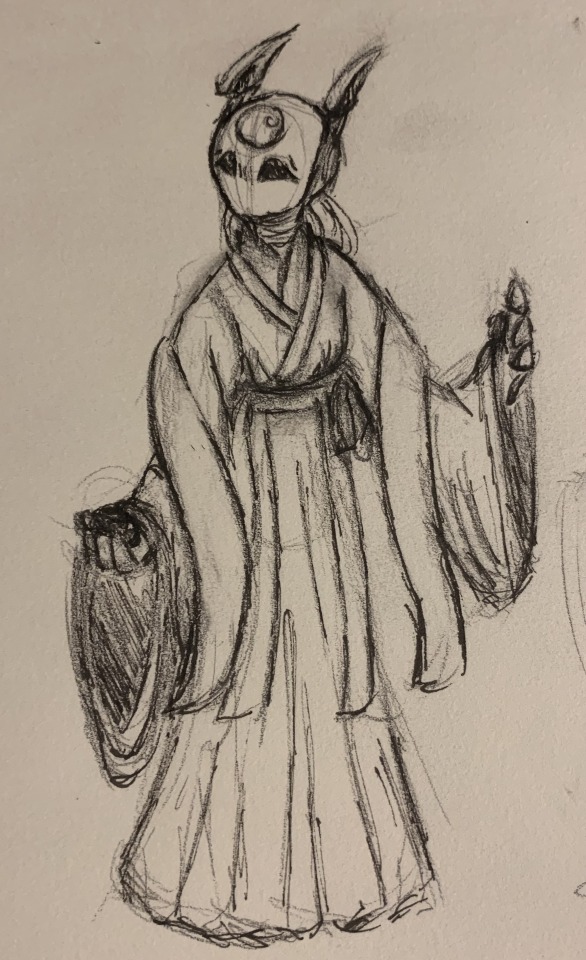

“Quiyao Ruqun” vs. “Qixiong Ruqun” on Moonie. I will be going for the latter for her official pre-collapse design. Both are “Ruqun” style of Hanfus. Currently I’m looking into “Shenyi” styles for Pebbles. :]
#rw looks to the moon#rain world#rainworld#looks to the moon#rain world iterator#rain world art#rw moon#my art
35 notes
·
View notes
Text
Qian Cao Peak Uniform

- For the Healer Peak, I decided that their vocal point will be the hats. You have the Donghua to thank for that. It’s only logical that inhabitants of this Peak to pull their hair back so it won’t get the way of their daily activities; such as surgeries or tending the herbal medicine garden. Then the bun would be encased inside the hats or headwraps. The hats used here aren’t limited to just futou or fujin. Just look at what MQF wear lol
- The garment they wear is called shenyi. The earliest record of shenyi dated all the way back to Zhou Dynasty. It experienced a decline during Wei, Jin, Northern and Southern Dynasties, before making a comeback around Song and Ming Dynasties. The simple design would fit Qian Cao, who would prioritize saving lives over looking fashionable. I imagine they would have pockets or even little straps sewn inside the sleeves to hold the acupuncture needles XD

- For the female population of Qian Cao Peak, they have the options to wear zhiju or quju. Both still fall under shenyi category. Zhiju is also worn by guys, thus making them unisex clothing. They wear pants underneath. Yes, I will keep reminding you this because I refuse to bend to PIDW logic.
- The younger girls (outer+junior disciples) wear epa, a type of head cover, while the older girls (senior+elders) get to wear fujin. They can wear the futou too should they choose.
- According to novel canon and donghua, Mu Qingfang wear green and white. So here their Peak’s primary color is white, with green secondary to differentiate them from Qing Jing. Even though futou in real life are black, all the headwear worn in Qian Cao are white to announce their cultivator status. Personally it looked similar to nurse caps for me.
43 notes
·
View notes
Text
Today I gave myself feels thinking about Fang Duobing, Di Feisheng, and Hulijing moving on and aging in a world without Li Lianhua. A world where Li Lianhua isn't there — but then again, he is there, in Lianhualou, and in the townspeople who flock to it, bearing gifts for the miracle doctor who once saved a life, fixed a roof, exposed a conman, comforted a child. Young Fang Duobing used to want to know every little detail about his hero, Li Xiangyi. Now Fang Duobing wants to know every detail about his beloved friend, Li Lianhua. The years pass and fewer people come. But if they remember him, Li Lianhua lives on.
(long post, half meta, half fic, bittersweet)
They travel together, with Hulijing, in Lianhualou. Fang Duobing has nothing better to do, so he takes up detective work again. Di Feisheng has nothing better to do, so he comes along. Everywhere they go, they look for Li Lianhua. And in their journeys, it seems like everywhere they go, someone is talking about Li Xiangyi. Li Xiangyi, who had always been something of a legend, but ever since his reappearance and subsequent (re)disappearance, has seemingly been elevated into something approaching godhood.
you should've seen him, people say, floating across the rooftops in red, cold and beautiful, like an avenging hero out of some novel. wasn't he dead? no — of course he wasn't, li xiangyi would never have been so easily killed. but it was bicha poison, i heard nobody could survive bicha poison. yes, he was definitely dead, and came back to life through dark magic. no, he'd been alive the whole time, just held captive by di feisheng. he tried to kill his shixiong ten years ago and failed, and came back to finish the job. no, his shixiong tried to kill the emperor and li xiangyi came to stop him. the emperor? impossible. yes — don't you know, li xiangyi is the emperor's long-lost son?
All of it only amuses Di Feisheng, but it irks Fang Duobing. The same Fang Duobing, who, when he was younger, would've hungered for every little detail about Li Xiangyi and begged to hear more, now finds it maddening to listen to these strangers talk about him as if they knew him. The world might have known Li Xiangyi, but it had never known Li Lianhua.
Li Lianhua, who could wield Shaoshi like it was a natural extension of his arm, but regularly cut his fingers clumsily slicing radishes and onions. Li Lianhua, who would invariably try to shrug off an attack of bicha poison, but yelped and jumped back from hot oil splatters in the kitchen like a child. Li Lianhua, who frowned when a passing carriage splashed mud onto his robes, but knelt carelessly into the dirt and grass to play with Hulijing.
None of them knew any of that.
But as Fang Duobing and Di Feisheng continue their travels, they begin to encounter other people as well. People who come running when they see Lianhualou in the distance tottering their way. People who come bearing gifts — a woman looking for the shenyi who had helped her with her back pain and also exposed the con artist who had tried to trick her daughter into marriage. A young man coming to thank the doctor who had given his father herbs for stress while uncovering the corrupt official who had falsely accused him of theft. An elderly couple looking for the young man who had helped them thatch their roof before a rainstorm and had given them some medicinal cream before he left. (One middle-aged man with a club, looking for the wangba quack doctor who had exposed his infidelity to his wife — he had left after one look at Di Feisheng, standing silently in the doorway with his arms folded across his chest and dao strapped across his back.) People who greet Hulijing like an old friend.
Fang Duobing listens eagerly to every story they tell him, and in return, he tells them about his brilliant, kind, exasperating friend. Di Feisheng rolls his eyes every time, but Fang Duobing notices he never walks away either. They don't talk about it. But it’s as if Li Lianhua returns, however briefly, during those visits; in those moments, Fang Duobing can almost see him standing there, bending down to pet Hulijing alongside these old friends as she grins her little doggy grin and wags her tail. She escorts their guests to the door, and sits in the doorway after they leave, looking out at the world as though waiting. He doesn't ask if Di Feisheng can see him too. They sit and share wine after these visits, and eat the fruit that the visitors bring, until Di Feisheng can stand the heavy silence no longer and pushes Fang Duobing outside to spar. Hulijing follows faithfully, as always.
(fang duobing had brought home a puppy, once. he can't remember where he found it, but he remembers that he had held it in his lap in his wheelchair, eager to show it to his uncle before taking it home to his mother. his uncle had glared, and told him that dogs were only useful to guard the house, and tianji manor already had guards, human ones, and that fang duobing would do better to focus on his swordplay rather than waste time on such useless and frivolous things. he had taken the puppy away and fang duobing had never seen it again. it wasn't until those blurry months as he rode across the countryside looking for li lianhua, hulijing trotting along ever so loyally at his side, that he realized this was just another way that shan gudao and li xiangyi were opposites.)
The years pass, and there are fewer and fewer people who come. One day Fang Duobing wakes up with the unbearable realization that he is now older than Li Lianhua had ever been, would ever be, and is unable to get out of bed for a good half a shichen. Di Feisheng leaves him be.
The years pass, and Di Feisheng grows older too. There are lines on his face, snowy white beginning to thread through his jet-black hair. Fang Duobing wants very much to tease him about it, but the words catch in his throat when he looks too closely at the signs of time on Di Feisheng's face. What a precious and altogether rare thing it is, to age.
The years pass, and Hulijing grows older too. Fang Duobing finds that more and more often, Hulijing can no longer keep up with him when he goes riding. He stops going riding. She gets cold more easily now too, and more and more often Fang Duobing wakes in the morning with Hulijing curled up under the covers next to him, her wet nose shoved into his armpit. He holds her close and thinks about Li Lianhua shivering in his arms.
--------------------
It's been nearly a year since their last visitor, but today there is an old man. He comes in the morning, bringing a basket of plums. A long time ago, he says, a young man who lived here saved my life. I had been poisoned, he says, by my son who wanted my money and my lands. The doctors said there was no cure. But then the young man came and performed a miracle. He saved my life. He saved my life.
Fang Duobing knows it was no miracle that saved him. He asks for the old man's hand and it is given readily, albeit bemusedly. He presses his fingers to the inside of the man's wrist, and is greeted with a whisper-faint, gentle thrum of yangzhouman — a soft hello from a much-beloved friend. You fool, he thinks dazedly, caught somewhere between overwhelmed that here is someone, inside whom a piece of Li Lianhua lives on, and so bitterly angry. What had it cost? Some hours, days, weeks? He doesn't let himself think of what another week might have afforded them in those wild final days, in their desperate search for a cure. Fang Duobing gives the old man back his hand and blinks back the sting of tears. He cannot talk about Li Lianhua today. He apologizes and tells him that the man he is looking for is traveling and won't be back for a few days, but that Fang-mou will pass on the message. Before he leaves, the man leans down to rub at Hulijing's ear. My old friend, he says, like me, you, too, are truly old now.
After the man leaves, Fang Duobing folds himself into a sit on the floor of Lianhualou and gathers Hulijing into his arms. Gently — her joints are stiff now, and he can't haul her around, can't roughhouse with her the way he used to. Di Feisheng comes down the stairs from where he had been listening; he stands behind Fang Duobing and places a warm, steady hand on his shoulder. At the edge of his vision, near the door, Fang Duobing can see the hazy hem of green robes. If he looks up, he wonders brokenly, what would he see? The face of a man forever frozen in youth? Or a face lined with age, snowy white beginning to thread through jet-black hair? He suddenly finds that he cannot bear to find out.
Fang Duobing knows. He knows that the myth and the outlandish rumors about proud, arrogant, beautiful Li Xiangyi will never die. But he also knows that one day, there will be no one else who comes to Lianhualou; no one left who remembers gentle, sly, infuriating Li Lianhua. One day, the old man will pass on and the piece of Li Lianhua that he carries with him will fade as well. And one day… Fang Duobing presses his forehead against the soft fur of Hulijing's neck where it has gone white and thin with age. He closes his eyes and breathes.
--------------------
Years and years and years later, Fang Duobing is awakened from where he has fallen into a light doze reading in his chair by a soft knock on the door. There is a woman standing outside, holding a small basket of pears. I think I remember this building, she says. I must've only been six years old, but I had run off and lost my parents. I fell down in the street and skinned my knees. A kind gege helped me and gave me a piece of candy. He said he would walk me home but I said I didn't know whether I should tell him where I lived. He laughed and asked if it would help if I knew where he lived. He pointed to the most fantastical and wild house I had ever seen. I think it was this place. Xiansheng, does he live here? Who was he? Do you know him?
Fang Duobing smiles and invites her inside. On the bed, the small white dog that Di Feisheng has named, ridiculously, Baigujing, raises her head and thumps her tail a few times in hello. Di Feisheng looks up from where he is writing a letter at the table. Fang Duobing leads the woman over and waves at her to sit down. He sits across from her, ignoring Di Feisheng's eyeroll, and offers her a piece of candy. He always keeps candy around. Fang Duobing smiles once more and says, if you'd like to know — there is so much I would like to tell you.
#i just... the idea that xiaobao just wants li lianhua to live in any way he can#if he can't live on in reality xiaobao will make damn sure he lives on in someone's memory#something something you die a second death when there is no one left to remember you something something legacy#one day there will only be fang duobing and di feisheng#fang duobing who was li lianhua's friend#and di feisheng who was li xiangyi's equal#but it is not this day#i hurt myself#mysterious lotus casebook#cw: pet death#it's only very vaguely mplied but just in case#my ramblings#how long does transferred inner power stay in someone else's body? *shrug*#that's probably not how the force works#i write economic research for a living why am i suddenly writing mlc fic i haven't written fic in 10 years THE BRAINROT IT IS REAL#in my mind these are simple townspeople not caught up on jianghu things & thus never knew that li lianhua was li xiangyi - whoever that is#baigujing is “white bone spirit” from journey to the west bc i thought di feisheng would find it funny#but did journey to the west even exist yet in lhl time? probably not? IDK i'm uncultured.
46 notes
·
View notes
Note
I love how all macaques are just cats also the separate thing of them all wearing exclusively dark colors and then there’s smash. That must have been a fun surprise for everyone lol.
It's like when there's a group of ravens and crows, and a bluejay shows up. The group is still a murder; just one is wearing brighter colors. Also do we forget that Meihouwang!Mihou be wearing almost only pink?
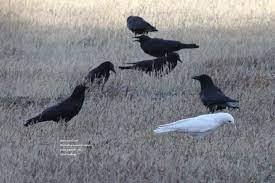
LMK Macaque: Sunset oranges (+red accents), blacks, and purples almost exclusively. He either dresses like Velma from Scooby Doo, or he's busting out the historical-inspired finery.
HeroIsBorn LEM: Royal purple and gray all the time. it's his fave colours. Started wearing royal purple to mock an emperor who limited it's use to royalty, and got way too attached to the shade. Default clothing is a loose purple chiton-style (almost similar to Mihou) dress. Will wear baggy robes/shenyi-style hanfus for the cold/comfort.
Reborn LEM: Mostly dark grays with small breaks of orchid-like pinks and purples. Doesn't even notice that they naturally dress like a goth. Only wears the same kind of gray long-sleeved hanfu - comfort item.
NewGods!Macaque: Old greaser/punk style of all shiny black jackets and jeans with metal accessories. Very rarely has a saturated color on - often something "borrowed" (shirt, hat, tie etc) from his husband.
Netflix!LEM: Dresses like a graveyard. Lots of ash gray and black. Only saturated color is blood red. Either in armor, underwear, or naked, barely any inbetween. Modesty is a human thing after all.
2000sCartoon LEM: Copies whatever his Wukong is wearing. Slowly beginning a goth transformation the more he becomes defined from the shadows. Enjoys leggings and loose t-shirts.
Meihouwang Mihou: Pink! Pink tunics and dresses galore. Maybe the occasional light yellow flowers. No dark tones on this lad.
Smash Legends LEM: Lots of different loud colours in the blue-purple range with black accompaniments + the opposite end in pink and white. Depending on their mood they could be wearing all neon purple and black goth/scene wear, or wearing an unapologetic lilac regency gown while drinking bubble tea. The other Macaques wonder how big their wardrobe is.
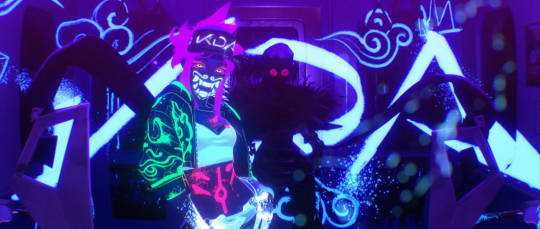

NewGods!Macaque: "Going any place fancy?"
Smash!LEM: "Nah, just wanted to feel a little Pride and Prejudice today."
LMK!Mac: *nods in understanding*
Group of goths with two almost-goths and one brightly-dressed lad. They will steal any free/unused clothing from Smash LEM's wardrobe if given permission.
#wukongverse#six eared macaque#liu er mihou#lego monkie kid#lmk#monkey king hero is back#monkey king reborn#new gods nezha reborn#meihouwang#the monkey king netflix#smash legends#journey to the west: legends of the monkey king
44 notes
·
View notes
Video
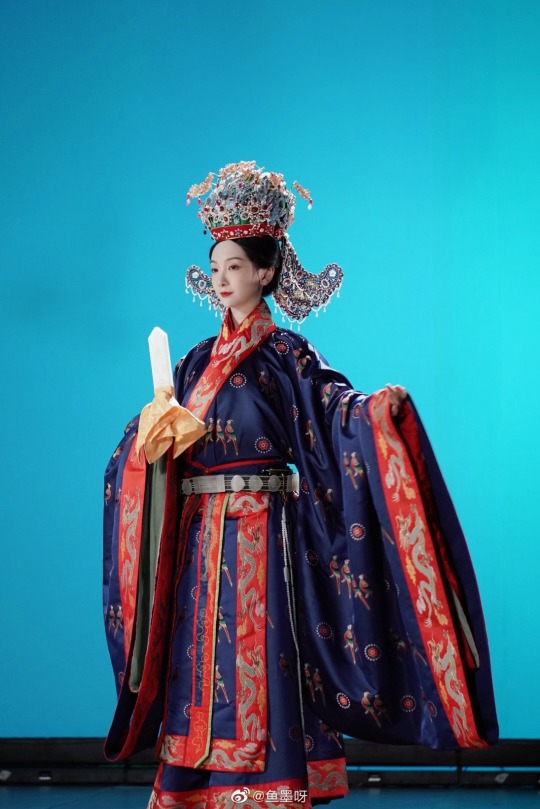
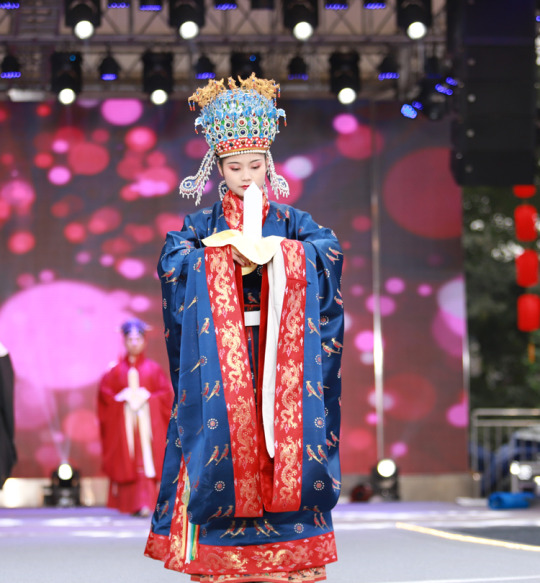


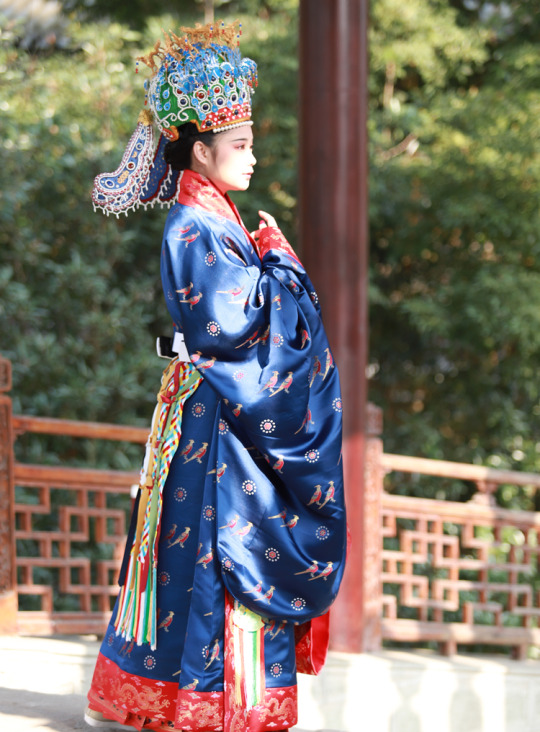
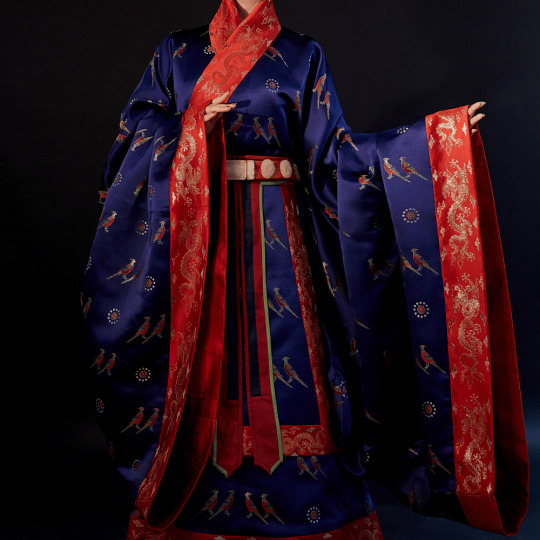

【Historical Artifact Reference】:
Ming Dynasty Royal Portrait:
・Portrait of Empress Xiaoduanxian (Chinese: 孝端顯皇后; 7 November 1564 – 7 May 1620) In ceremonial dress (翟衣/di yi)
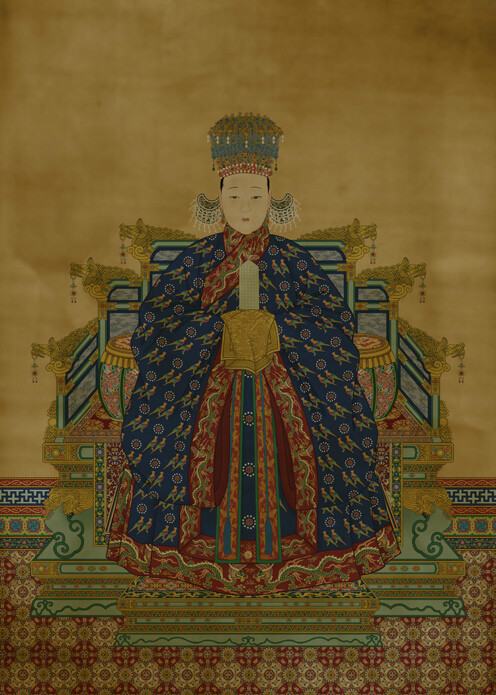
・Nine Dragons and Nine Phoenix Crowns of Empress Xiaoduanxian (※This Phoenix Crowns only for important ceremonial occasion which call “礼冠/Li Guan” wear with ceremonial dress(翟衣/di yi)
----
Unearthed from Ming Dynasty royal mausoleum Ming Dingling (明定陵) , is a mausoleum wehre Wanli Emperor, together with his two empresses Wang Xijie and Dowager Xiaojing, was buried.
In addition to this phoenix crown, the Empress has another phoenix crown for other occasions.
----
Collection of the National Museum of China.
This phoenix crown is 35.5 cm high, 20 cm in diameter, and weighs more than 2,000 grams. It is inlaid with hundreds of high-quality gemstones of various colors and decorated with more than 5,000 fine pearls.




[Hanfu・漢服]Chinese Ming Dynasty Traditional Clothing Hanfu (翟衣) & Phoenix Crown (鳳冠) Reference to Ming Dynasty Relics & Empress Portrait
—–
【History Note】
Diyi (Chinese: 翟衣), also called known as huiyi (褘衣) and miaofu (Chinese: 庙服), is the historical Chinese attire worn by the empresses of the Song dynasty and by the empresses and crown princesses (wife of crown prince) in the Ming Dynasty.
The Diyi also had different names based on its colour, such as yudi, quedi, and weidi. It is a formal wear meant only for ceremonial purposes. It is a form of shenyi (Chinese: 深衣), and is embroidered with long-tail pheasants (Chinese: 翟; pinyin: dí or Chinese: 褘; pinyin: hui) and circular flowers (Chinese: 小輪花; pinyin: xiǎolúnhuā). It is worn with guan known as fengguan (lit. 'phoenix crown') which is typically characterized by the absence of dangling string of pearls by the sides. It was first recorded as Huiyi in the Zhou dynasty(1050–221 BCE).
The Diyi follows the traditional Confucian standard system for dressing, which is embodied in its form through the shenyi(深衣) system. The garment known as shenyi(深衣) is itself the most orthodox style of clothing in traditional Chinese Confucianism; its usage of the concept of five colours, and the use of di-pheasant bird pattern.
【 Influence to Other Country】
Korea
Korean queens started to wear the Diyi (Korean: 적의; Hanja: 翟衣) in 1370 AD under the final years of Gongmin of Goryeo,when Goryeo adopted the official ceremonial attire of the Ming dynasty. Same as the early Korea Joseon, were bestowed by the Ming Dynasty.
According to the Annals of Joseon, from 1403 to the first half of the 17th century the Ming Dynasty sent a letter, which confers the korea queen with a title along with the following items: 翟冠(Ming womens whose husband held the highest government official posts can wear this kind of crown,different from Ming Empress Phoenix Crown 鳳冠), a vest called 褙子(Beizi), and a 霞帔(Xiapei). However, the Diyi sent by the Ming dynasty did not correspond to those worn by the Ming empresses as Joseon was considered to be ranked two ranks lower than Ming.
Instead the Diyi which was bestowed corresponded to the Ming women's whose husband held the highest government official posts. In the early Ming Dynasty period, the Diyi were given to Korea Joseon By Ming, but after the Ming Dynasty reformed the clothing system, The Ming Dynasty bestow the 大衫( Dà shān) to the Korean queen instead of Diyi. The Diyi worn by the Korean queen and crown princess was originally made of red silk; it then became blue in 1897 when the Joseon king and queen were elevated to the status of emperor and empress.
it then became blue in 1897 when the Joseon king and queen were elevated to the status of emperor and empress.
After the fall of the Ming Dynasty, the system of China granting clothing to Korea was interrupted. Korea Joseon were forced to become tributary state of the Qing Dynasty. Korea Joseon carried out "nationalization" based on the costumes bestowed by the Ming Dynasty in the past. But according <Veritable Records of the Joseon Dynasty Volume 46> "嬪宮冊禮時, 旣有翟衣, 則當有翟冠, 而我國匠人不解翟冠之制。 考諸《謄錄》, 則宣廟朝壬寅年嘉禮時, 都監啓以: ‘七翟冠之制, 非但匠人未有解知者, 各樣等物, 必須貿取於中朝, 而終難自本國製造, 何以爲之?’ 云則宣庙有: ‘冠則制造爲難。’ 之敎。 “
Although Korea Joseon has Diyi,but no craftsman know how to make 翟冠(Di Guan), and the materials needed for make 翟冠(Di Guan) need to be taken from China (which need money for that). After all, it is difficult to manufacture in Korea. Therefore, Korea Joseon has not worn 翟冠(Di Guan) since the fall of the Ming Dynasty and change it to 대수머리(大首머리)
Korea "nationalization" process↓
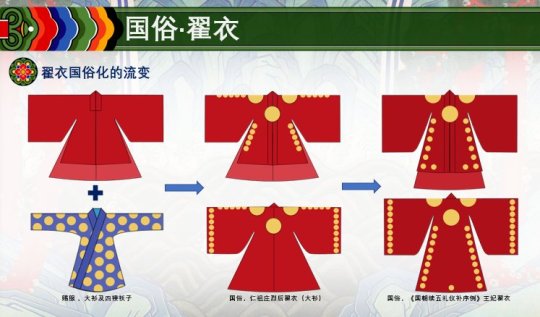
대수머리(大首머리)

Japan
In Japan, the features of the Tang dynasty-style huiyi was found as a textile within the formal attire of the Heian Japanese empresses.
————————
📝Recreation Work & Hanfu: @执月传统服饰 & @鱼墨呀
📸Photo: @执月传统服饰 & @鱼墨呀
🛍️Tabao:https://item.taobao.com/item.htm?spm=a230r.1.14.16.1edc69a6bumOJ8&id=636369495576&ns=1&abbucket=16#detail
🔗Weibo:https://weibo.com/7454398796/K4mehzhsg
————————
#Chinese Hanfu#Ming Dynasty#chinese fashion history#Chinese Culture#Phoenix Crown 鳳冠#Di yi/翟衣#chinese#chinese historical fashion#Empress Xiaoduanxian#Nine Dragons and Nine Phoenix Crowns#Sinosphere#hanfu history#China History
343 notes
·
View notes
Text
Layer 3 深衣 (#1)
Shen QingQiu's third layer (and second of shown layers) is some kind of white shenyi. Main color is white with blue(ish) decorated collar. I had a hard time deciding the pattern design I was gonna use, since I needed it to have a collar that's cut streight thought the chest and which ends up in the waist and not the arm pit, like my previous pattern. I also want there To be no seam in the weist line, meaning that I will Need a LOT of fabric...
Two weeks back, when I'm editing this, I got a change to go to bigger city and ended up buying the fabric and some other stuff. I took 5 meter of fabric, just to be on the safe side. Somehow it still ended up not being enought. Thankfully they had same fabric in the store where I live.
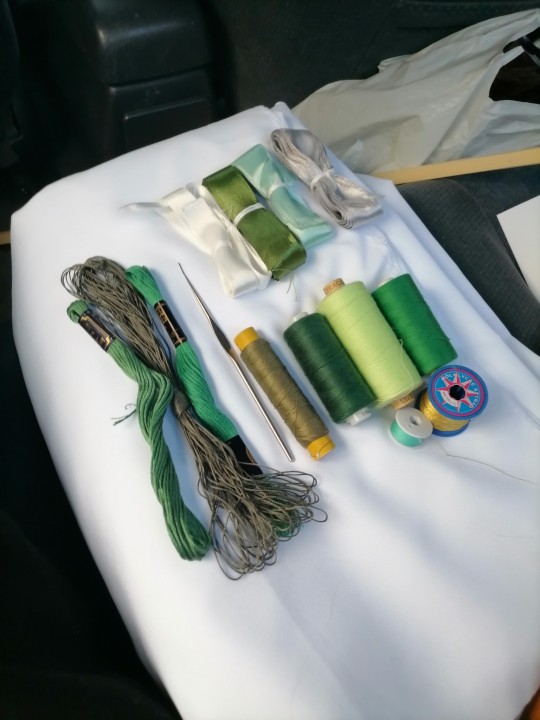
It took me way too long to make a pattern design that i was happy with. At first I had tought that I would want to make shenyi that that had those Nice big sleeves and streight rectangular pieces that optimize fabric use, as shown down in that very bad image...
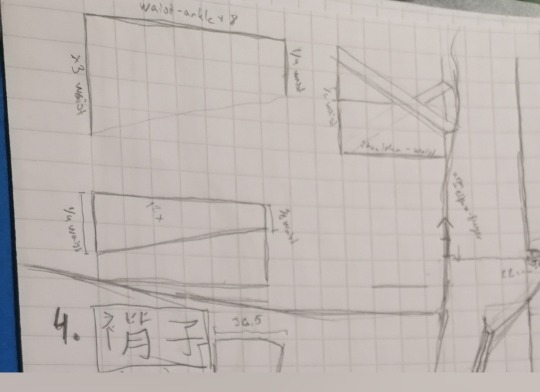
Problem was that, becouse I also will be having beizi that has curved sleeves, i Need To háve undergarment with same sleeve design but smaller. Also, I have read the first book. The original SQQ would not have given up a change to stealthily show off how much money he has by having a garment that will use more fabric than needed. spoilers, I think I succesed... but at what cost... Well actually under 30€, since i used the cheapest one i could find :) Then there's about a weekend of criminal about of orange Juice and me suffering in between, but here's the final plan as Bad of an image as before.

Just realised that these are probably not very comprehensive to anyone else. I might do a post later about pattern drawing process, but basicly i just use few basic principles of hanfu making and rest is just improvisation with springle of inspiration from historical garments and c-drama costume designs.
Drawing the patterns here. My mom helped me To keep my sanity and hold the measure tape becouse those pieces are so long.

Here are all the pattern pieces cut out. Since most of the side seams are streight lines, I didn't want to waste my paper to them, instead I'm just going to use the fabric sides To my advantage and measure the neened lenght on the fabric.
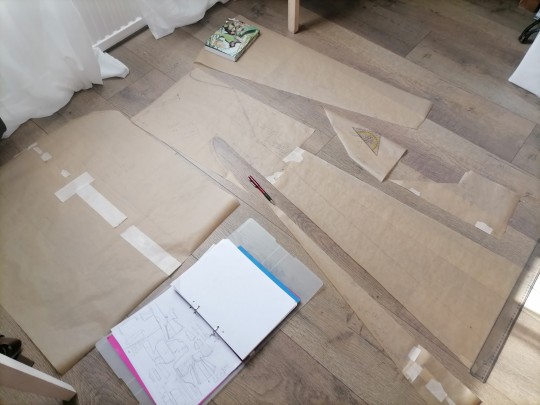
Next, I will sleep a little.
#svsss cosplay#svsss shen qingqiu#shen qingqiu#sqq#scum villian self saving system#svsss#sewing#pattern making#cosplay#hanfu#汉服#R4sqq#progress update#sewing project#sewing progress
68 notes
·
View notes